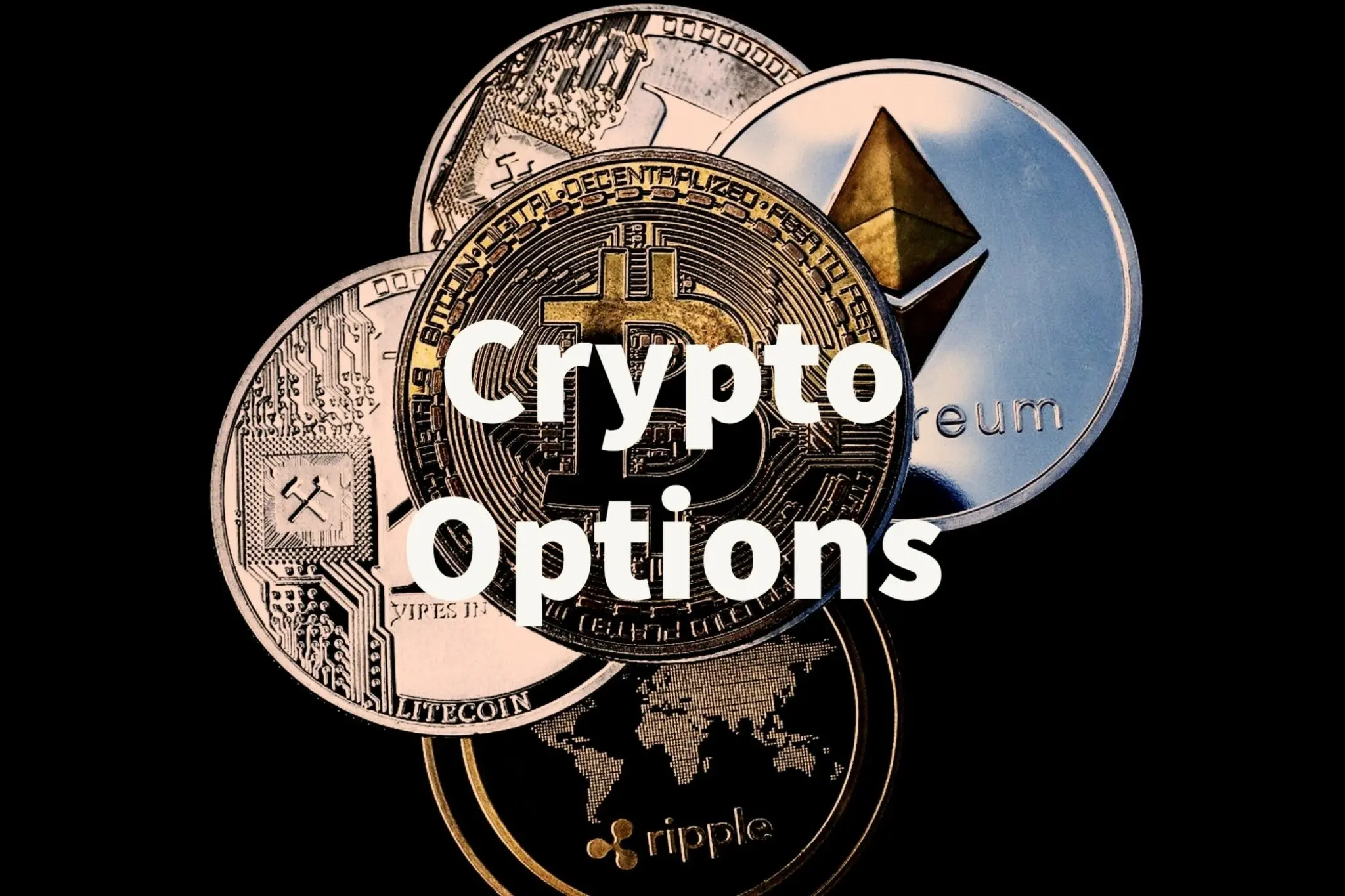Understanding the mechanics of crypto options trading can open up new opportunities for your investment strategy. Crypto options work similarly to traditional options, offering the right but not the obligation to buy or sell at a predetermined price. You’ll encounter terms like strike price, expiry date, and premium as you navigate this domain, each playing a crucial role in the transaction.
The allure of crypto options lies in their flexibility and potential for strategic financial maneuvering. By choosing a digital asset and betting on its future price movement, you can diversify your portfolio and manage risks more effectively. The world of crypto is notoriously volatile, and options enable you to capitalize on these price swings while limiting potential losses.
Engaging with crypto options requires a clear understanding of the products involved, including call and put options, which allow you to speculate on whether prices will rise or fall. This market is growing, providing innovative ways to engage with cryptocurrencies beyond traditional trading methods. The journey into crypto options trading can seem complex but having a firm grasp of the basics makes it considerably more accessible.
Underlying Assets
Cryptocurrency options involve various underlying assets that significantly influence trading strategies. You need to consider factors like volatility and liquidity when choosing these assets.
Most Common Cryptocurrencies For Options

In crypto options trading, prominent cryptocurrencies such as Bitcoin (BTC) and Ethereum (ETH) often serve as underlying assets. These digital currencies hold a large market capitalization, providing a degree of stability and widespread acceptance.
Bitcoin’s status as a pioneer in the cryptocurrency market makes it attractive for options trading. Similarly, Ethereum offers a strong appeal due to its extensive use in smart contracts and decentralized applications. Other cryptocurrencies like Litecoin (LTC) and Cardano (ADA) also appear in option contracts, but they tend to have more limited liquidity.
Familiarity with these cryptocurrencies can aid in selecting suitable options with potentially manageable risks. A table summarizing their market roles and popularity might assist you:
| Cryptocurrency | Market Role |
|---|---|
| Bitcoin (BTC) | Pioneer currency |
| Ethereum (ETH) | Smart contracts |
| Litecoin (LTC) | Silver to Bitcoin’s gold |
| Cardano (ADA) | Emerging platforms |
Volatility And Liquidity Considerations
Volatility and liquidity are crucial in determining which underlying assets you might choose for options trading. Higher volatility can present opportunities for profit, but it also increases risks.
Bitcoin is known for its significant price swings, attracting traders seeking high-risk, high-reward scenarios. Ethereum demonstrates similar volatility patterns, though its price movements can be more influenced by technological developments within its network.
Liquidity, the ease of buying or selling an asset without affecting its price, is also essential. High liquidity in Bitcoin and Ethereum ensures that you can enter or exit positions with minimal market disruption, which can be advantageous for executing profitable trades.
Understanding these aspects can help you assess the potential performance of your options contracts, allowing for informed decision-making.
Exercising Crypto Options

When considering exercising crypto options, understanding the differences in settlement, the potential for early exercise, and how practical examples apply provides a strong foundation for informed decisions in this dynamic market.
Cash-Settled Vs. Physically Delivered
Crypto options can be cash-settled or physically delivered. Cash-settled options result in a payment based on the difference between the market and strike price, without the exchange of the actual asset. This type of settlement simplifies transactions and reduces the need for handling cryptocurrencies directly.
Physically delivered options involve the actual exchange of the underlying cryptocurrency upon exercise. You receive or deliver the asset itself. This can be advantageous if you want to hold or utilize the cryptocurrency.
Choosing between these depends on your strategy, the level of exposure you desire to cryptocurrencies, and your preferences for asset ownership versus receiving equivalent value in cash.
Early Exercise
Early exercise refers to exercising an option before its expiration date. In the crypto market, this can occur with American-style options, which permit exercise at any point before expiration.
This strategy can be beneficial if you anticipate unfavorable price movements or have immediate capital needs. However, early exercise might lead to missing out on potential gains if the market moves even further in your favor before expiration.
Careful consideration of market conditions, future price expectations, and your investment goals is crucial when deciding whether to execute an early exercise.
Practical Example
Consider you hold a call option for Bitcoin with a strike price of $40,000. If Bitcoin’s market price rises to $50,000 before expiration, exercising this option lets you purchase Bitcoin at the lower strike price.
You can then sell it at the current market rate to realize a profit. Conversely, if the price stays below the strike, exercising would not be beneficial. Understanding these scenarios and how they play out in real market conditions assists in making well-informed decisions.
Written examples like these can aid in grasping the financial implications and strategic advantages of exercising crypto options efficiently.
Pricing And Volatility
In crypto options trading, pricing and volatility are crucial concepts that influence how options are valued and traded. Understanding these factors can enhance your decision-making process, allowing you to better anticipate market movements.
Role Of Implied Volatility
Implied volatility (IV) represents the market’s forecast of a cryptocurrency’s potential price fluctuations. It factors into options pricing models, directly impacting the premium you pay or receive for an option. Higher IV often suggests opportunities for greater price swings, leading to higher option premiums. Conversely, lower IV generally means smaller expected moves and lower premiums. Monitoring IV can help you gauge market sentiment, making informed bets on future volatility.
Impact Of Supply And Demand
The balance between buyers and sellers significantly affects crypto options pricing. When demand for a certain option increases, premiums can rise sharply. This is due to the limited availability of options contracts, leading to a competitive bidding environment.
On the flip side, a surplus of supply with limited buyer interest can drive option prices down. As someone actively trading, staying aware of these dynamics helps you anticipate price changes tied to market interest levels.
The Greeks
The Greeks are vital tools in assessing risk and potential return in options trading. Delta measures how an option’s price changes with respect to the asset’s price shifts. Gamma reflects the rate of change of delta, giving insight into an option’s potential volatility as the asset price changes.
Theta reveals how time decay affects an option’s value, important for strategies based on time frames. Vega illustrates how much an option’s price is likely to change with shifts in IV. Mastering these metrics allows you to evaluate and optimize your strategies, ensuring they align with your risk tolerance and market expectations.
Margin And Collateral
In crypto options trading, margin and collateral play crucial roles. Understanding margin requirements, the types of collateral you can use, and the risks associated with leveraged positions can help you manage your strategy effectively.
Margin Requirements
Margin requirements refer to the minimum amount of capital you must deposit to open or maintain a position in crypto options. These requirements are influenced by the volatility of the asset and the leverage offered by the platform. Initial margin, the upfront collateral needed, ensures that you can cover potential losses.
Maintenance margin comes into play after opening a position. Platforms may require additional funds if the value of your collateral drops, triggering a margin call to prevent the position from being liquidated. It’s important to regularly monitor your positions to avoid unexpected margin calls.
Collateral Types
Collateral is the asset pledged to secure a trading position and can take various forms. In crypto options, common types of collateral include cryptocurrencies like Bitcoin or Ethereum. Holding these assets in your account can provide the necessary security to back your trades.
Some platforms also accept fiat currency as collateral. Choosing the right collateral depends on your trading strategy and market conditions. Each type has its pros and cons; cryptocurrencies might offer higher yield opportunities but come with more volatility compared to fiat currencies.
Risks Of Leveraged Positions
Leveraging positions in crypto options involves significant risks. While leverage can amplify your potential returns, it equally increases your potential losses. It’s critical to understand that options markets can be volatile. A sudden market shift might deplete your collateral quickly, resulting in liquidation of your position.
Risk management strategies, like stop-loss orders and regular monitoring, can mitigate some risks. Always use leverage judiciously, considering your risk tolerance and investment goals. Awareness of market conditions and responsible leverage use is vital to protect your capital.
Frequently Asked Questions
Crypto options trading involves understanding key terms like strike price, expiry date, and premium. This section covers essential aspects for beginners, platforms for trading Bitcoin options in the USA, pricing calculations, risks, an illustrative trade example, and the settlement process.
What are the basics of trading crypto options for beginners?
To start trading crypto options, you must familiarize yourself with call and put options. Calls allow you to buy at a specific price, while puts let you sell. Knowing the strike price, premium, and expiration date is crucial. Begin by practicing with a demo account on a reputable exchange.
Which platforms are best for trading Bitcoin options in the USA?
In the USA, platforms like Deribit, LedgerX, and Bakkt are well-regarded for Bitcoin options trading. These platforms offer robust security measures, user-friendly interfaces, and compliance with regulatory standards, making them suitable for both new and experienced traders.
How can you calculate the price of Bitcoin call options?
The pricing of Bitcoin call options typically involves the Black-Scholes model or the Binomial model. Factors include current Bitcoin price, strike price, time to expiration, volatility, and risk-free interest rate. These elements help determine the option’s fair value and potential profitability.
What are the risks associated with trading crypto options?
Risks in crypto options trading include high volatility, market unpredictability, and potential loss of the premium paid for purchasing options contracts. It’s important to implement risk management strategies and stay informed about market conditions to mitigate possible losses.
Can you provide an example of a crypto option trade?
Suppose you purchase a call option for 1 Bitcoin with a strike price of $40,000, expiring in April. If Bitcoin’s price exceeds $40,000 before expiration, your option allows you to buy at the lower strike price, potentially yielding a profit. If not, only the premium is lost.
What is the settlement process for crypto options?
The settlement of crypto options can be either cash-based or physical. In cash settlement, only the profit or loss difference is exchanged, without involving the actual asset. In physical settlement, the underlying cryptocurrency is transferred to the option holder. Each method has specific implications for traders.
Putting It All Together
In crypto options trading, various components interact to form the overall system.
Underlying Asset: This is the cryptocurrency such as Bitcoin or Ethereum that forms the basis of the options contract. You choose which cryptocurrency you want to trade options on.
Strike Price: The strike price is the predetermined price at which you can buy or sell the cryptocurrency if the option is exercised.
Expiration Date: Options contracts have a set expiration date, by which you must exercise the option. After this date, the option becomes invalid.
Premium: This is the cost associated with purchasing the option. The premium is influenced by various factors, including market volatility and the difference between the strike price and the current price of the asset.
And to get a better idea of these, you can use a crypto options calculator to determine your position size accurately.
To participate in crypto options:
- Select the Asset: Choose the cryptocurrency you want to focus on.
- Choose Call or Put: Decide if you expect the asset’s price to rise (buy a call) or fall (buy a put).
- Review Pricing: Evaluate the premium costs related to each option.
Example Table of Crypto Options:
| Component | Description |
|---|---|
| Underlying Asset | Cryptocurrency the option is based on |
| Strike Price | Predefined price for buying/selling the asset |
| Expiration Date | Date by which the option must be exercised |
| Premium | The cost of buying the option |
Engage with platforms providing educational resources to deepen your practical skills. Understanding each component is crucial for effective trading decisions.
Explore these crypto option trading exchanges:
